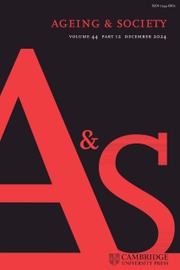Article contents
New analytical tools and frameworks to understand dementia: what can a human rights lens offer?
Published online by Cambridge University Press: 18 December 2020
Abstract
The biomedical model has traditionally informed the dominant discourse on dementia and has significantly shaped practitioners’, policy makers’ and researchers’ responses. This model contextualises dementia as a progressive neuro-degenerative cognitive disorder and focuses on deficits and underlying pathology, often overlooking the fact that the person can and should be an active partner in the treatment process. Beginning in the late 1990s, the exclusive reliance on the bio-medical model has come under increasing scrutiny with a growing awareness that by recasting dementia in broader social and more humanitarian terms, much can be done to promote the individual's quality of life. Different frameworks and analytical tools have been forwarded to help us better understand dementia. These include personhood, citizenship, public health, disability and human rights. This review examines the merits of framing dementia as a disability, a citizenship concern and a human rights issue. It highlights some of the potential gains that can arise for the individual in using a human rights model to enhance practice, inform policy and create a more balanced research agenda. The article concludes by arguing that the complexities and magnitude of dementia are such that it requires multiple responses and a broad range of interpretative frameworks.
Information
- Type
- Forum Article
- Information
- Copyright
- Copyright © The Author(s), 2020. Published by Cambridge University Press
References
- 12
- Cited by

